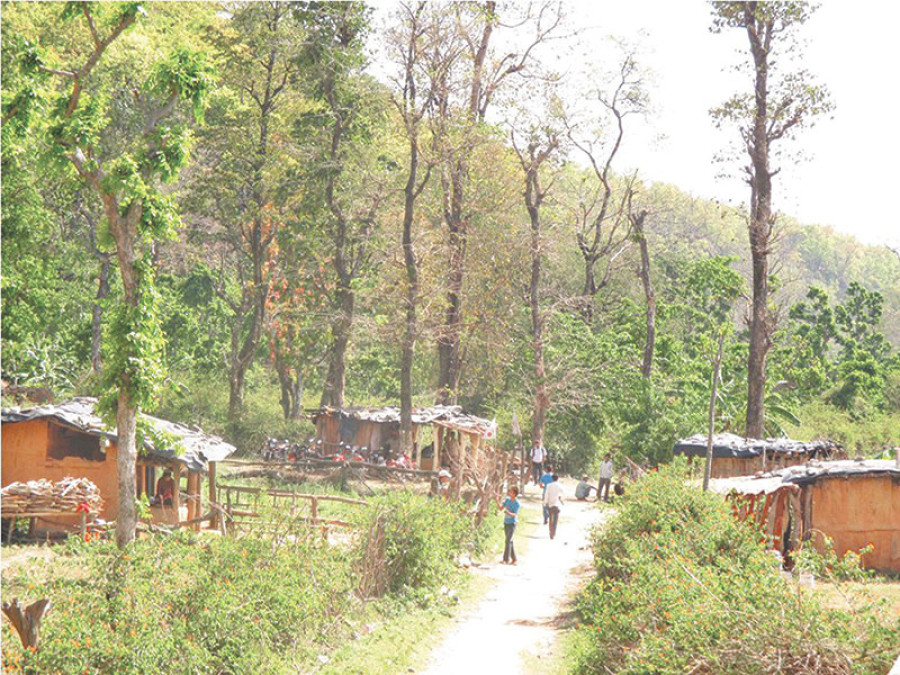National
Study: 46,000ha of forest cover stripped between 2001 and 2016
Nepal lost 46,000 hectares of its forest cover between 2001 and 2016, a recent study has revealed.
Nepal lost 46,000 hectares of its forest cover between 2001 and 2016, a recent study has revealed.
The study, ‘Socio-economic Factors and Management Regimes as Drivers of Tree Cover Change in Nepal’, mentions that while the country lost forest cover of 46,000 hectares, it gained 12,200 hectares of forest in that period, indicating that the total forest cover loss was 33,800 hectares. The country has total tree covered area of 4.74 million hectares in 2000 before the research began.
The study was recently published in the biodiversity and conservation section of the PeerJ, an international online journal.
The study, jointly co-authored by three scholars including two Nepalis - Sujata Shrestha and Uttam B Shrestha - for an American and an Australian university, had used subset of global tree cover data provided by the global forest watch, which offers the highest resolution datasets of tree cover using Google Earth Engine and Landsat’s satellite imagery for the entire globe, for showing the extent and change of forest area. For the study, the researchers had divided both extent and change of the total tree cover into five physio-graphic zones and 75 districts to compare spatial patterns of tree cover gain and loss.
During the 16 years, the highest forest loss occurred in the Chure and the Tarai regions.
The study says that the loss of tree cover in Siwalik was 28 percent, Hill region 26 percent, Tarai 22 percent, Middle mountain 21 percent and High mountain 2 percent.
A significant loss of tree cover was witnessed in Kailali (6 pc), Dang (5 pc), Sarlahi (4 pc), Rautahat (3 pc) and Nawalparasi (3 pc).
The Hill region gained the highest area of 6,200 hectares of forest (51 pc) followed by Siwalik 3,000 ha (25pc), Tarai 2,100 ha (17pc), Middle mountain 830 ha (7pc), and High mountain 70 ha (1 pc).
The study found that contribution of forest user groups to forest recovery was better in the districts where forests were maintained by local communities.
“After accounting socio-economic drivers of forest cover change, our analysis showed that districts with the larger number of community forests had a minimum loss in tree cover, while districts with the higher proportion of vegetation covered by community forests had a maximum gain in tree cover,” the report says. “This indicates a positive contribution of the community forestry program to reducing deforestation and increasing tree cover.”
44.74 percent of the country’s total area was forest cover, according to a joint five-year survey conducted by the Department of Forest Research and Survey and National Forest Products Survey Project conducted between 2067 to 2071 BS.
A recent paper released by the Ministry of Forest and Environment, defining the current status of the forest, has said the country has total forest cover of 6.6 million hectares, while nearly 100,000 hectares of forest land is under the threat of encroachment.




 8.12°C Kathmandu
8.12°C Kathmandu%20(1).jpg&w=200&height=120)














